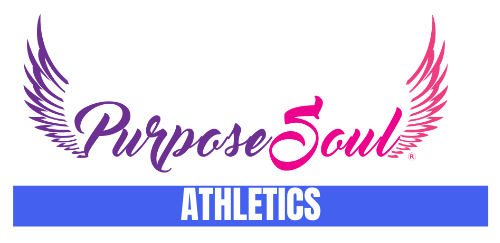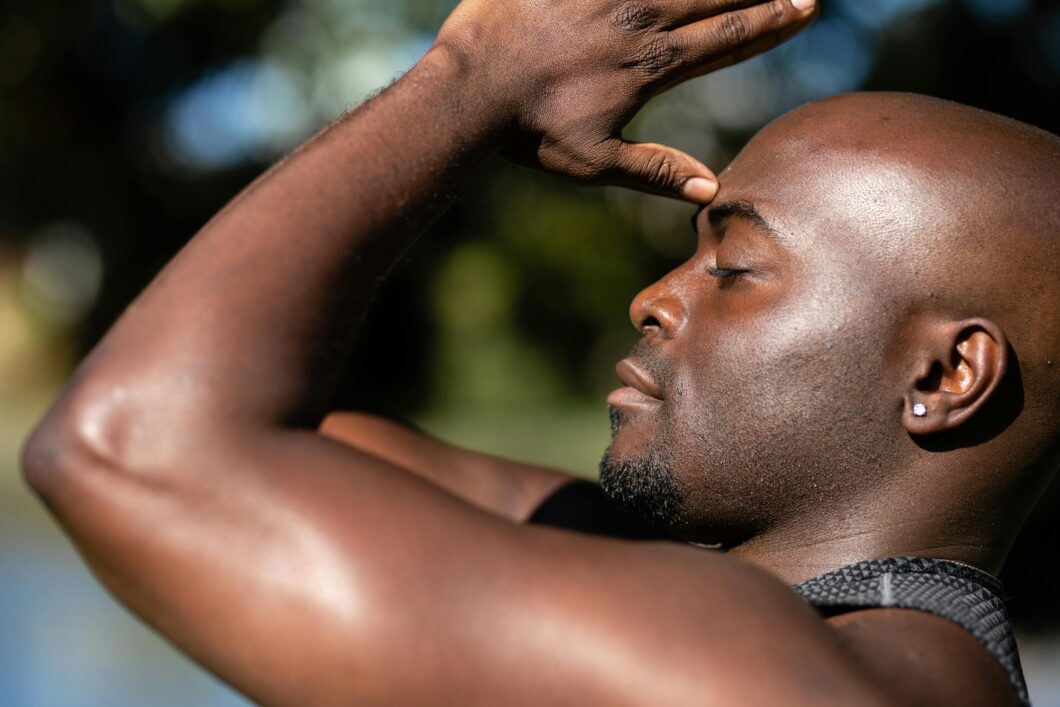Every athlete knows the importance of rest and recovery. However, many athletes experience issues like burnout, injury, and poor performance because they often think of rest primarily as taking a break from strenuous physical activity and rarely consider the need for mental rest. True rest is the activation of a holistic approach.
Why Rest is More than Physical: A True Story of Electronic Bedrest
A coaching client of mine, we’ll call her Sally, called me one morning sounding withdrawn. Earlier in the day, I sent her a check-in text, as I typically do with my clients. She didn’t get back to me for a couple of hours. That was unlike her. When she finally responded, she told me she was throwing up, and that’s why she didn’t reply sooner. She had been battling with feeling burnt out, stressed, and not like herself. For weeks, her body had been showing signs of breaking down through various symptoms. Not surprisingly, she caught a bug, but she couldn’t shake it. It had been over a week of feeling this way. She was doing her best to lay low, but she was still exhausted and not feeling well. I immediately told her to get off her phone and rest. Five minutes later, my phone rang.
“Misty, I have a question for you,” Sally said, sounding both confused and drained. Her usual peppy voice was drawn out, low and slow. “What do you mean by rest? I have been taking breaks and taking naps, so I have been resting. What am I missing?”
I explained to her that mental rest was just as significant as physical rest. She needed an electronic disconnect. Yes, she wasn’t as physically active, but mentally, she was still in overdrive trying to keep up with social media, emails, deadlines, and commitments.
As we spoke, she realized that by doing this, she was still stressed and not relaxed at all. She was really frustrated. I calmly explained that by staying connected and trying to keep up, even if she was physically still, her body was still releasing stress hormones due to her mental activity. Therefore, she was still in fight-or-flight mode, which is why she felt drained. She needed to disconnect so her body and mind could get on the same page for healing.
So, I put her on a 48-hour electronic bedrest. She put a note up on her social media and email that she would be unavailable for a couple of days. A few days later she reached out to me telling me that she was finally starting to feel better. We talked about how she needed to go slow and not ramp back up to 100 right away.
Sally learned the importance of holistic rest the hard way. She prolonged her healing by not disconnecting, but she learned the lesson nonetheless. And, despite her fears, nothing fell apart while she rested.
How Your Body and Brain Work Together to Rest and Recover
As mentioned above, your brain and body work closely together in many, many ways. They are not separate when it comes to how you function so when you’re thinking about rest, you have to take both into consideration.
Think about a time when you felt like you couldn’t keep going, but you shifted your mindset to keep pushing forward. We hear this from athletes all the time. When you feel like your body might give out, you can keep your mental fortitude strong so that you push past your limits. By doing this, your athletic abilities strengthen. If your body and mind are connected this way, then they must be connected in other ways too.
How Your Body Responds to Mental Stress
Using stress as an example, let’s look at what happens to the body. When you feel stress, a part of your brain called the amygdala–responsible for detecting danger and processing emotions like fear and anxiety–releases a hormone called cortisol, which results in adrenaline and stress. These hormones flood your body, and you go into fight, flight, or freeze. You might also experience symptoms like a headache, racing heart, or stomachache. To get out of this, you have to activate your parasympathetic nervous system so that your mind and body can chill out and get back to working together for growth rather than survival.
Mind Body Optimal Recovery
Your body doesn’t know the difference between perceived stress or danger and actual stress or danger. It doesn’t know the difference between what you’re thinking and what’s actually happening. So when you start thinking or feeling negative, your body responds to keep you safe.
The reality is that we all battle with this because we are wired to focus on the negative. We want to protect ourselves from danger, even if that danger is a situation we made up in our head or a past memory that we’re afraid of reliving. We also live with stressors like pressure, distraction, social media, family, lifestyle, responsibility, etc.
A truth of life is that perceived and real lifestyle threats are all around us, meaning that to be at our best, we have to be mindfully aware and train ourselves to respond rather than react. This self-regulation is directly tied to our ability to rest and recover. When we acknowledge when we are stressed or thinking negatively, we can quickly identify when we need to take steps to manage this state before it becomes a bigger problem.
Consider the findings of this research review, “Recovery self-regulation in sport:”
“…there is an important role for the regulation of cognition and emotion as complete recovery is only accomplished when both physical and mental resources are replenished. Specifically, detachment and mental rest (i.e., ceasing cognitive effort) enable athletes to restore depleted resources. Finally, self-control is often required to initiate appropriate, and sometimes effortful, recovery activities. That is, athletes may have to exert self-control to undertake activities, particularly when they are tired, stressed, or in a negative mood.”1
When it comes to rest, it’s clear that athletes need a holistic approach that creates a clear path to optimal recovery by incorporating the brain and body into the game plan.
7 Types of Rest and Recovery for Athletes
In creating a holistic rest and recovery routine, I teach my clients about the different ways that they can approach rest. It is widely accepted that there are seven types of rest. What they have in common is that they all help to interrupt your mental and physical strains so that you can reconnect, recharge, and get back into flow. They are as follows:
- Physical – This type of rest involves taking physical breaks, but also active breaks where you do something fun but not strenuous, like going for a walk or getting a massage. It also means getting a good night’s sleep and/or taking a nap.
- Mental – There are several ways to take mental rest, like taking breaks from work/making progress, disconnecting, or taking mini mental reset breaks throughout the day. The goal is to take breaks from strenuous mental exertion.
- Emotional – This type of rest is like a release that can be found in safe spaces where you’re not being judged. It might be confiding in someone, chatting with a life coach or counselor, journaling, or practicing techniques to let go.
- Sensory – Your senses can easily become overloaded in today’s world where we are constantly connected to our devices. Additionally, environmental factors like bright lights, conversation, music, and lots of activity can put a strain on your senses. When something feels it’s like too much,–even if it’s fun–it’s probably time to take a break.
- Creative – Everyone has different creative activities that they enjoy and that help them get back into flow and reconnect with themselves. It might be journaling, art, music, or cooking, or maybe it’s something like trying new ways to perfect your golf swing or catch your next big fish.
- Social – Some people recharge in the presence of others, and some people need quiet alone time. Some people need a mix of the two. Listen to what your social battery needs.
- Spiritual – This type of rest calls for a deeper connection beyond our mind and body. Some people find this in prayer, community, or meditation. Whatever that looks like for you, it nourishes your soul.
A good rule of thumb is when you feel disconnected from yourself, or like life is so busy that it no longer feels like your own or it’s all a blur, you probably need to take time out to rest and recharge.
Steps Elite Athletes Can Take to Create a Holistic Rest and Recovery Plan
Fill in the blanks below to design a rest routine that works for you.
- Physical Rest (Active & Passive Recovery): After training, I will prioritize __ (e.g., stretching, yoga, ice baths, sleep) for ___ minutes to help my body recover and stay strong.
- Mental Rest (Clearing the Mind): When my mind feels overloaded, I will take a break by ___ (e.g., deep breathing, stepping outside, journaling) for ___ minutes to reset and refocus.
- Emotional Rest (Letting Go of Pressure): I will create space for emotional recovery by ___ (e.g., talking to a coach, writing down my thoughts, practicing self-compassion) when I feel overwhelmed.
- Sensory Rest (Reducing Overstimulation): To give my senses a break from screens, noise, and bright lights, I will unplug from technology for ___ minutes before bed or after practice.
- Social Rest (Choosing Supportive Environments): I will spend time with people who recharge me, like ___ (e.g., teammates, friends, family), and limit time with ___ (e.g., negative or draining influences).
- Creative Rest (Reigniting Inspiration): To refresh my mind, I will engage in a non-sport activity like ___ (e.g., listening to music, spending time in nature, reading) for at least ___ minutes a day.
- Spiritual Rest (Connecting to Purpose & Flow): I will take time to reconnect with my “why” by ___ (e.g., visualization, meditation, prayer, gratitude) to ground myself and refuel my motivation.
- My Mind Reset: If my mind feels overloaded, I will disconnect from technology and take ___ minutes to ___ (e.g., write down thoughts, practice gratitude, listen to calming music) to reset and refocus.
- My Non-Negotiable Rest Habit: The one thing I will commit to daily for better rest and recovery is ___ (e.g., meditating for 10 minutes a day, getting 8 hours of sleep, taking 3 five-minute breaks throughout the day).
Journal Prompt Exercise: Rest & Recharge Check-In
Identify your current rest habits and create a personalized strategy to improve the balance between mind and body recovery. At the end of your day or after a tough practice, reflect on and answer the following prompts in your journal:
- Mind Check-In: What thoughts, worries, or mental fatigue am I carrying right now? How is this affecting my focus and performance?
- Body Check-In: How does my body feel today? Are there any signs of exhaustion, tension, or soreness I need to address?
- Emotional & Social Rest: Did I have any draining or energizing interactions today? How can I create more space for positive connections and emotional recharge?
- What Type of Rest Do I Need Most? Looking at the 7 types of rest (physical, mental, emotional, sensory, social, creative, spiritual), which one am I lacking most right now?
- Action Plan: What is one small step I can take today to give my mind or body the rest it needs? Take a few minutes to listen to your body and mind before writing down your answer. You will intuitively know what you need.
Transform your inner game with skills like a resilient winning mindset, emotion management, and mindfulness. Contact us to request information on our programs.
- Balk, Y. A., & Englert, C. (2020). Recovery self-regulation in sport: Theory, research, and practice. International Journal of Sports Science & Coaching, 15(2), 273-281. https://doi.org/10.1177/1747954119897528

